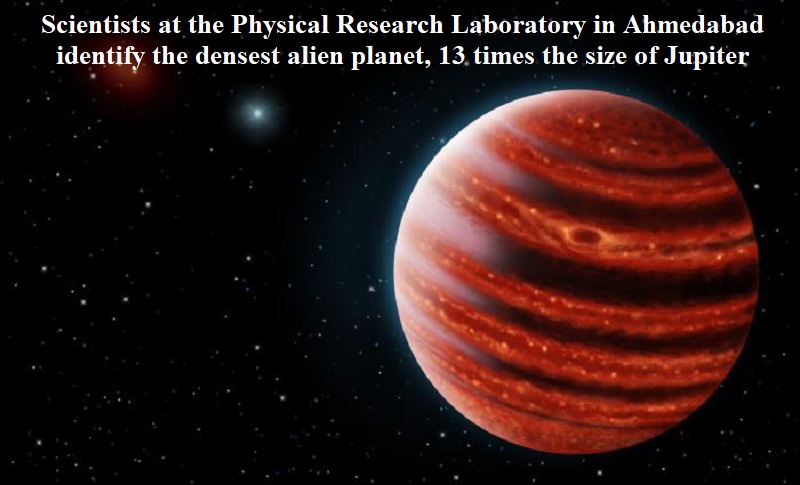
A team of international scientists led by Professor Abhijit Chakraborty from the Physical Research Laboratory (PRL) in Ahmedabad has identified the densest known alien planet, which is 13 times the size of Jupiter.
This discovery marks the third exoplanet identified by PRL scientists and has been published in the journal Astronomy & Astrophysics Letters.
Collaborating scientists from India, Germany, Switzerland, and the United States utilized the PRL Advanced Radial-velocity Abu-sky Search spectrograph (PARAS) at the Gurushikhar Observatory in Mt. Abu to accurately determine the planet’s mass. The exoplanet was found to have a weight of 14 g/cm³.
The planet, named TOI 4603b or HD 245134b, orbits a star known as TOI4603 or HD 245134. This star was previously identified by NASA’s Transiting Exoplanet Survey Satellite (TESS) as a potential host for an unknown secondary body. The body has now been confirmed as a planet.
TOI 4603b is located 731 light-years away from Earth and completes an orbit around its star every 7.24 days. It has an incredibly hot temperature of 1396 degrees Celsius.
According to the Indian Space Research Organisation (ISRO), what makes this finding unique is that it falls into the transition mass range between massive gas giant planets and low-mass brown dwarfs. There are currently fewer than five known exoplanets in this mass range, with masses ranging from 11 to 16 times that of Jupiter.
While the search for extraterrestrial life continues, scientists have already identified over 5,000 exoplanets beyond our solar system, each with their own distinct characteristics, features, and atmospheres.
The discovery of TOI 4603b, one of the most massive and dense giant planets, provides valuable insights into the formation, migration, and evolution mechanisms of such massive exoplanets, as stated by ISRO.
In addition to this finding, astronomers have also discovered a new Earth-sized planet located approximately 90 light-years away. The planet, named LP 791-18d, orbits a red dwarf star in the constellation Crater. It was detected using NASA’s TESS and Spitzer Space Telescope.
The mass of LP 791-18d was calculated by analyzing its orbital period and the gravitational interactions with other planets in the system. Astronomers believe that this nearby planet may have the potential to sustain life.

Post Your Comments